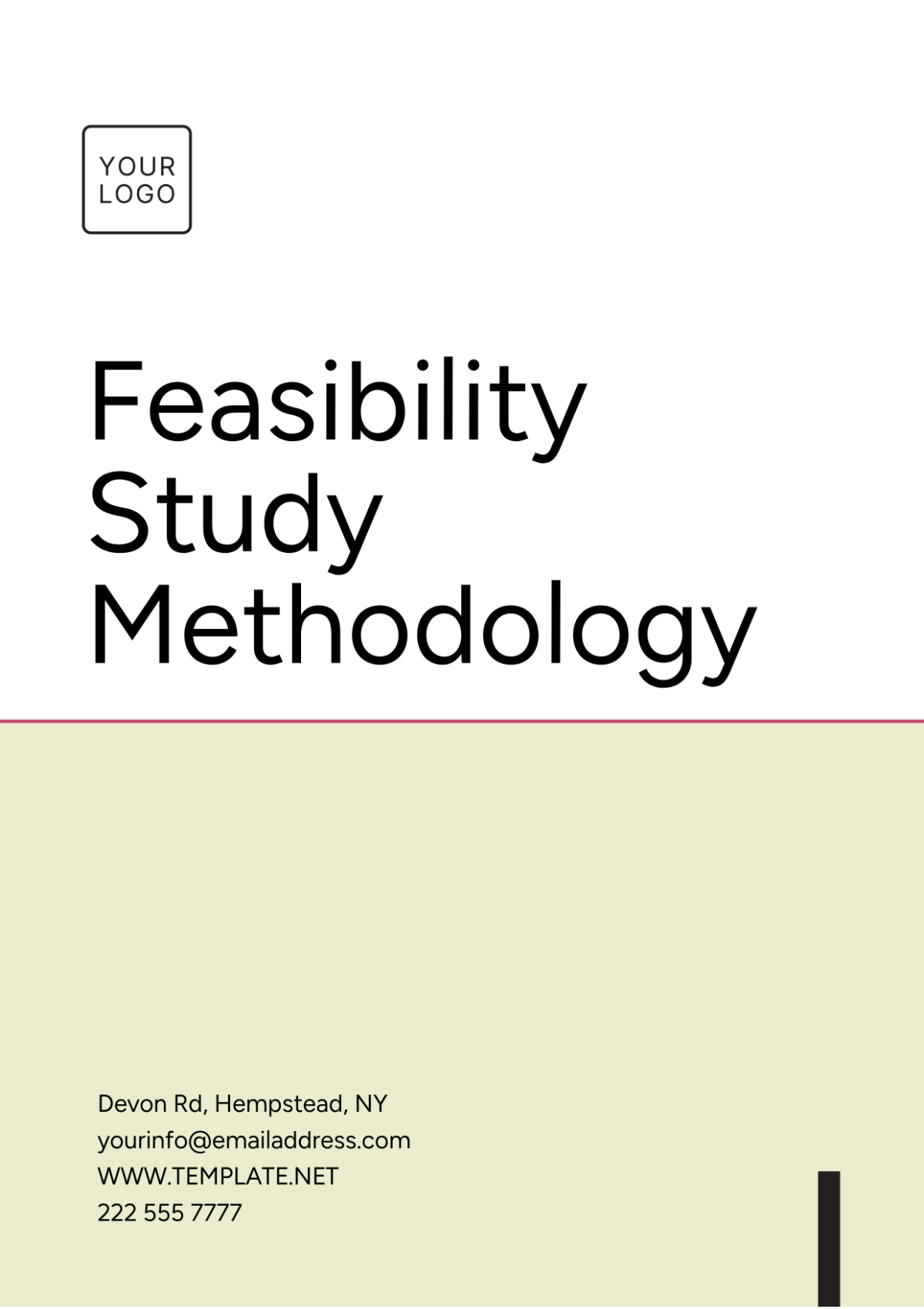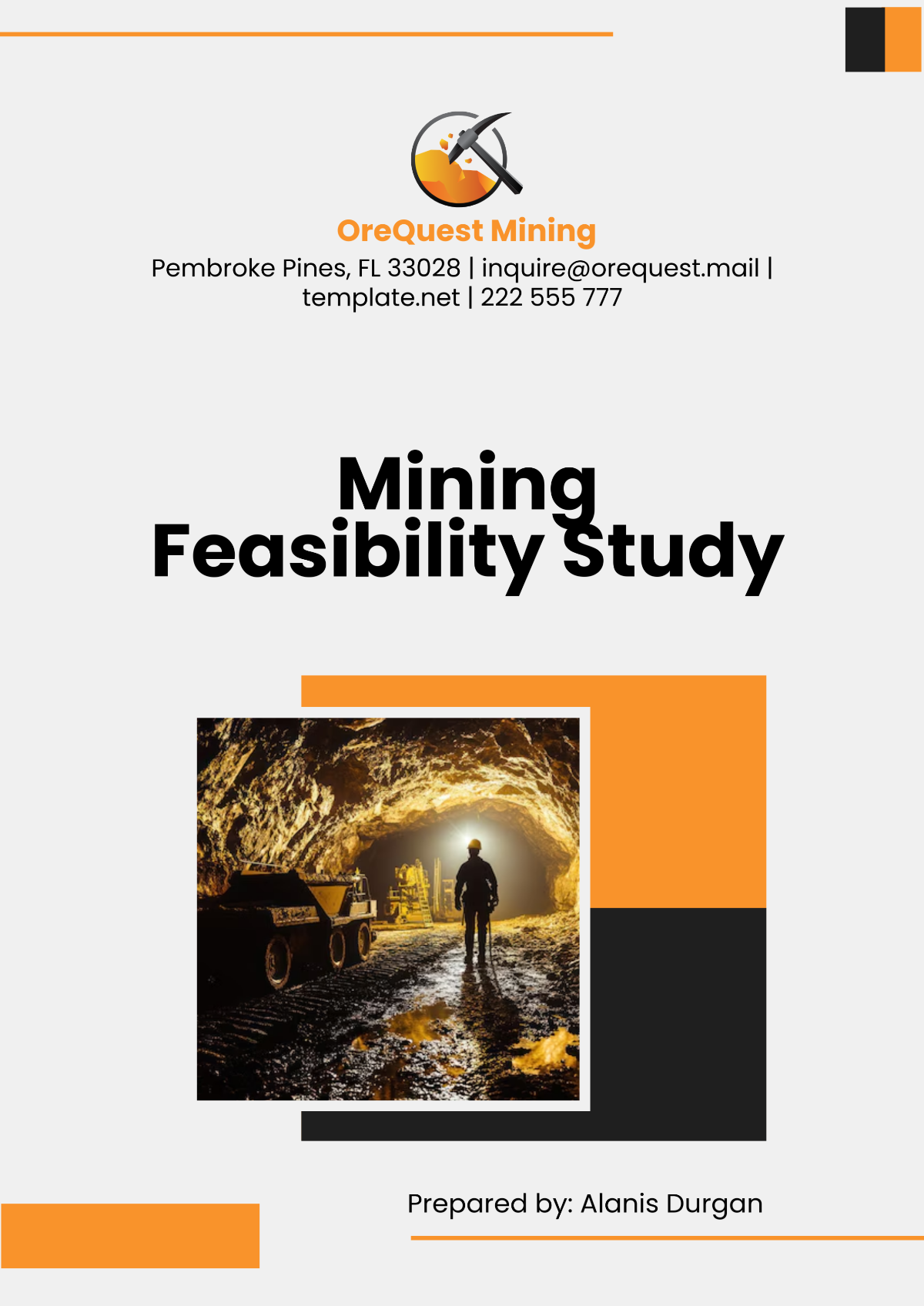Mining Feasibility Study
I. Executive Summary
This mining feasibility study, conducted by [Your Company Name], evaluates the potential viability of a proposed mining project located in the Central Region. The study encompasses an extensive analysis of geological data, exploration results, and resource estimations to confirm the presence and quality of economically extractable mineral reserves. Additionally, this assessment includes an overview of critical engineering designs, infrastructure requirements, and operational frameworks tailored to ensure effective and efficient resource extraction. The report prioritizes compliance with federal and state regulations, integrating best practices for environmental stewardship and safety standards.
Economic and financial evaluations form the cornerstone of this study, providing a detailed analysis of capital expenditure, operational costs, and projected revenues. Sensitivity analyses have been conducted to address market fluctuations, commodity pricing, and potential risks, ensuring informed decision-making. By balancing environmental considerations with economic returns, [Your Company Name] underscores its commitment to sustainable and responsible mining practices. This feasibility study aims to provide a comprehensive foundation for strategic planning and decision-making, setting the stage for long-term success and community collaboration in the Central Region.
II. Introduction
Mining feasibility studies serve as essential tools for evaluating the practicality and potential success of proposed mining projects. They provide a structured framework for assessing key aspects, including geological formations, resource availability, and the economic viability of mineral extraction. [Your Company Name] has undertaken this study to deliver a comprehensive analysis of the proposed project, with a focus on defining deposit characteristics, estimating costs, and identifying potential risks. By incorporating detailed geological data, engineering designs, and operational requirements, this study aims to present an accurate projection of the project's feasibility.
The report also addresses critical factors such as environmental impacts and compliance with regulatory standards, ensuring that all project activities align with state and federal laws. Our analysis considers the infrastructure required to support operations, including transportation, power supply, and processing facilities, with the goal of optimizing efficiency and minimizing environmental footprints. Through a meticulous approach, [Your Company Name] endeavors to provide stakeholders with a clear understanding of the project’s potential, highlighting its viability, challenges, and opportunities. This introduction outlines the foundation for the in-depth evaluations presented in subsequent sections, emphasizing our commitment to sustainable and responsible mining practices.
III. Project Overview
The feasibility study conducted by [Your Company Name] focuses on a 10,000-hectare area situated in the Central Region, renowned for its rich geological formations. The primary mineral of interest in this region is copper, a critical material for global industries including construction, energy, and telecommunications. In addition to copper, the area contains notable secondary deposits of gold and silver, which enhance the project's economic potential. Preliminary exploration data indicates a substantial concentration of these minerals, warranting further analysis to confirm resource estimates and extraction feasibility.
The Central Region offers advantageous conditions for mining operations, including proximity to existing transportation networks and availability of essential utilities. [Your Company Name] has conducted an initial assessment of the terrain, climate, and logistical requirements to develop a plan that ensures operational efficiency. Infrastructure planning includes the construction of access roads, power supply lines, and processing facilities designed to meet production demands while minimizing environmental disruption.
Furthermore, this study emphasizes environmental considerations and community engagement as integral components of project development. Baseline environmental studies and stakeholder consultations are underway to ensure compliance with environmental regulations and to foster local support. The copper, gold, and silver deposits within the Central Region represent a significant opportunity for sustainable resource development, aligning with [Your Company Name]’s commitment to responsible mining practices.
IV. Geological and Resource Analysis
The geology of the proposed site is characterized by sedimentary formations and intrusive igneous rocks. Several drill samples have confirmed the presence of copper and associated minerals.
Resource Quantification
Mineral | Estimated Reserves (tons) | Grade (%) |
|---|---|---|
Copper | 500,000 | 1.5 |
Gold | 20,000 | 0.03 |
Silver | 50,000 | 0.1 |
V. Engineering and Infrastructure
The proposed mining project in the Central Region will necessitate extensive infrastructure development to support sustainable and efficient operations. Key components include access roads, a reliable power supply, water treatment systems, ore processing facilities, and waste management systems. These elements are designed to ensure seamless operations while maintaining compliance with environmental regulations and prioritizing community and worker safety.
Infrastructure Components
Access Roads
The project will require the construction of durable access roads connecting the mining site to nearby transportation networks. These roads will facilitate the movement of heavy machinery, raw materials, and finished products. Careful consideration will be given to route planning to minimize environmental impact and provide safe transit for equipment and personnel.
Power Supply
A stable and efficient power supply is critical for mining and processing activities. The preliminary plan includes a dedicated substation and transmission lines to connect the site to the regional grid. Where feasible, renewable energy sources such as solar or wind power will be integrated to reduce carbon emissions and operational costs.
Water Treatment Facility
To address water usage and environmental concerns, a water treatment facility will be constructed to process wastewater and ensure safe discharge or reuse. This system will comply with federal and state water quality standards, supporting sustainable resource management.
Processing Plant
On-site ore processing facilities will be developed to extract copper, gold, and silver efficiently. The plant design will incorporate modern technologies for ore crushing, grinding, and flotation, optimizing recovery rates while reducing energy consumption.
Waste Management Systems
Comprehensive waste management systems are essential to handle mine tailings and other byproducts. Tailings storage facilities will be designed with state-of-the-art containment measures to prevent leaks and contamination. Plans also include recycling initiatives and proper disposal methods for hazardous materials.
VI. Environmental Impact Assessment
The proposed mining project in the Central Region has been evaluated for its potential environmental impacts, in compliance with federal and state environmental regulations. Key concerns include deforestation, water quality degradation, and air pollution, all of which are inherent challenges in large-scale mining operations. [Your Company Name] recognizes the importance of mitigating these impacts to preserve the local ecosystem and maintain community well-being.
Deforestation
The clearing of land for mining and infrastructure development could result in the loss of forest cover and habitat disruption. To address this, [Your Company Name] will implement reforestation programs to restore vegetation in affected areas post-mining. Additionally, non-essential land clearing will be minimized, and buffer zones will be established around ecologically sensitive areas to protect biodiversity.
Water Quality Degradation
Mining operations pose a risk of contaminating local water sources due to potential runoff and wastewater discharge. To mitigate this, advanced water treatment systems will be installed to ensure compliance with water quality standards before any discharge occurs. A comprehensive water recycling program will also be implemented to reduce freshwater consumption and preserve local water resources.
Air Pollution
Dust generation and emissions from mining equipment and ore processing can contribute to air pollution. To minimize this, dust suppression systems such as water sprays will be deployed, and equipment with low-emission engines will be prioritized. Regular air quality monitoring will ensure adherence to air quality standards and prompt mitigation measures if necessary.
Through these targeted strategies, [Your Company Name] is committed to minimizing the environmental footprint of its operations while promoting sustainable mining practices and maintaining a balance between resource extraction and ecological conservation.
VII. Economic Evaluation
The financial assessment considers capital expenditures (CapEx), operational expenditures (OpEx), and projected cash flows to determine the economic feasibility of the mining project.
Financial Estimates
Cost Item | Estimated Cost (USD) |
|---|---|
Capital Expenditure | 150,000,000 |
Operational Expenditure (annual) | 30,000,000 |
Projected Revenue (annual) | 70,000,000 |
VIII. Risk Analysis
A comprehensive risk analysis is integral to ensuring the success and sustainability of the proposed mining project in the Central Region. By identifying key risks early and implementing robust mitigation strategies, [Your Company Name] aims to minimize potential disruptions and safeguard project viability.
Fluctuating Commodity Prices
The profitability of mining operations is heavily influenced by global commodity markets, where copper, gold, and silver prices can fluctuate significantly due to economic trends and market dynamics. To mitigate this risk, [Your Company Name] will implement financial hedging strategies to stabilize revenue and protect against adverse market movements. Additionally, a diversified product portfolio and cost-efficient operations will help maintain competitiveness during market downturns.
Regulatory Changes
Changes in mining regulations, environmental laws, or taxation policies can impact project timelines and profitability. To address this, [Your Company Name] will maintain proactive engagement with regulatory authorities and industry stakeholders. Regular compliance reviews and a legal advisory team will ensure that all operations align with the latest regulations, reducing the likelihood of project delays or penalties.
Environmental Concerns
Environmental incidents, such as water contamination or excessive deforestation, could lead to operational halts, legal challenges, or community opposition. As part of the project’s environmental management plan, [Your Company Name] will implement strict monitoring protocols, emergency response plans, and community outreach programs. These efforts aim to mitigate environmental risks while fostering local trust and support.
Contingency Plans and Insurance
To prepare for unforeseen events, [Your Company Name] will establish contingency plans, including alternative suppliers, operational backups, and flexible project timelines. Comprehensive insurance coverage will also be secured to address financial risks related to natural disasters, equipment failures, or legal liabilities.
By addressing these key risks with thorough planning and adaptive strategies, [Your Company Name] is well-positioned to navigate uncertainties and achieve long-term success in the Central Region.
IX. Conclusion and Recommendations
The findings of this feasibility study conducted by [Your Company Name] confirm that the proposed mining project in the Central Region is economically viable and technically feasible. The presence of substantial copper deposits, complemented by secondary reserves of gold and silver, provides a strong foundation for profitable operations. Furthermore, the integration of modern mining and processing technologies, along with robust environmental management plans, ensures that the project can be developed sustainably with manageable environmental impacts.
Key recommendations for moving forward include initiating the detailed project design phase to refine engineering plans and operational workflows. This phase will focus on optimizing resource extraction, enhancing infrastructure efficiency, and incorporating advanced mitigation strategies for environmental and social concerns. Additionally, [Your Company Name] should prioritize securing all necessary permits and approvals from regulatory authorities, ensuring compliance with federal and state standards. Early engagement with community stakeholders is also advised to build support and address potential concerns.
By advancing to the next stages of development with a focus on detailed planning, regulatory compliance, and community collaboration, [Your Company Name] can confidently move toward establishing a sustainable and successful mining operation in the Central Region.






































